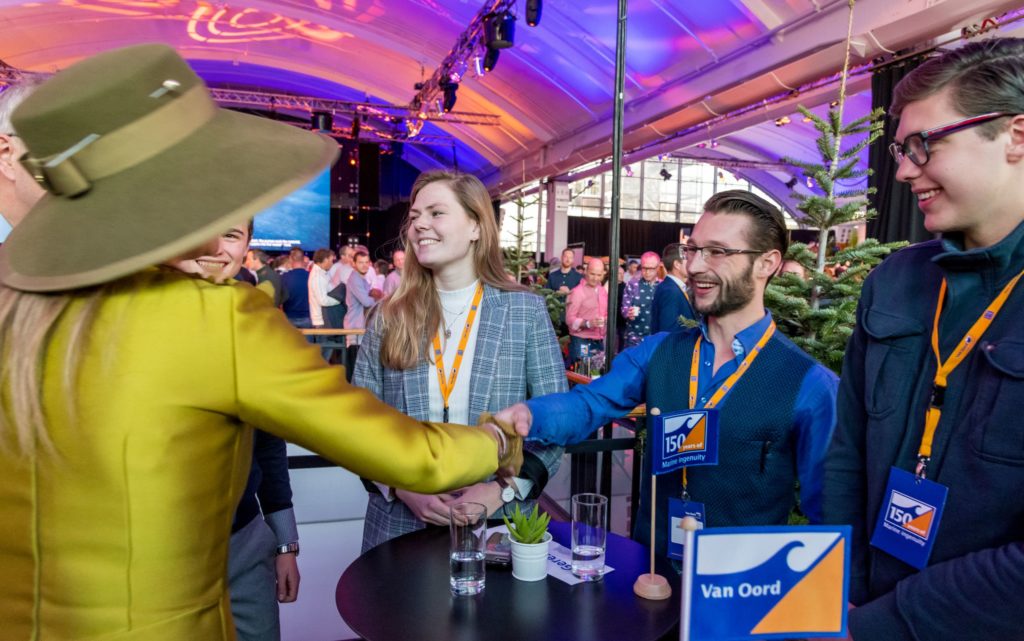Curriculum Vitae
introduction
After four years of designing and engineering physical products at VanBerlo, I complemented my competences by mastering in the science of strategic organizational transformations. My specialty focusses on the rift between innovative exploration and the execution and exploitation of found solutions, and the differences and challenges of building or acquiring capabilities. For which the acquisition of VanBerlo by Accenture served as a primary case-study.
In addition I have studied complexity theory, as stakeholder alignment and complicated product ecosystems are inevitably intertwined. Relying on qualitative business dynamics methods, I believe to have found a way to effectively navigate the twilight between the hard engineering and soft multi-stakeholder challenges.
I prefer an end-to-end involvement, as successful innovations require a successful alignment of business model, manufacturing and user-centered design. Having mastered the process from idea on a napkin to production, I bring the tools, knowledge and experience to constructively guide businesses towards the next generation of products.
‘I am a Strategic Design Engineer, growing to become an Ambassador Of Innovation’
This statement describes my current state of being. It means that I am a generalist in nature, trying to shed the role of specialist from my previous occupation. I thrive when I get to explore and apply a holistic view in my work, to innovate while working with others. My initial aim was to become an inventor, then I decided to direct my energy towards the fuzzy front end. I aim to bring engineering, design and strategy together, as an Ambassador of Innovation.

More About Me…
Vision
Design can be a powerful tool for change and can contribute to a more equitable and sustainable world. I have always possessed strong intrinsic values. It is the reason I became a designer: to create impactful, ethical, and sustainable designs that address societal challenges and drive transformation. I aim to consistently communicate my intrinsic values through my work, interactions, and professional behavior.
I see design as a transformational process, one that not only addresses immediate problems but also guides long-term societal shifts. My work aims to reduce cognitive strain, promote self-sufficiency, contribute to circularity, and enhance inclusivity. By focusing on these areas, I strive to create designs that improve quality of life and encourage positive behavioral changes.
To achieve this, I attempt to become part of the decision-making process before a design project begins. As it is here, I believe we should integrate a human-centered approach to ensure that the designs align with human values. This way, I aim to facilitate a process to drive innovation that benefits all stakeholders. Using design thinking and collaborative methodologies, I attempt to unite their diverse perspectives and involve a broader societal context. By fostering synergy, I hope to enable the creation of meaningful and sustainable solutions.
Identity
I have a recognizable professional personality which is marked by a pro-active, social and innovative drive. Often outspoken, proposing and discussing ideas for positive impact derived from a holistic perspective on society and industry. In teams I often naturally take up a leading role. I care about the team members and support them in their development or performance if they are open for it. I tend to be quite susceptible for the emotions and body language of others. I can be insensitive at times, when I am focused on something else.
Besides a people minded, interactive and extraverted character I possess an evenly strong introverted side which I is often accompanied by a very strong focus. During this focus I can move mountains of work, tirelessly working without loss of effectiveness. A personality pitfall to watch out for is a wrongly aimed focus (distraction) or a too long extended focus (risk of burning out).
The development goals for my personality are to strengthen empathy and compassion for my direct peers in moments of high pressure. Next to this I wish to improve my planning and grip on the work process to spread the workload and prevent stress to reduce undesired behaviour. A side effect would be to find a healthy balance between social interaction and solitary focus in which I can effectively work.
Background
With an applied sciences degree in Industrial Product Design and nearly four years of experience at Design Agency VanBerlo, I identified as a Product Design Engineer. However, I soon realized that more than just product design was needed to be part of today’s paradigm shifts and drive transformation. I often worked on product designs based on an outdated vision and had little influence on shifting its trajectory. This led me to a pivotal realization: more needed to be transformed than just the product. To shift the perspective of consumers, companies, or governments, a grounded strategy is required to create wider traction for change.
Within my role, I shifted between engineering and design, primarily positioned in the final stages of the design process. However, these strategies were always created before or at the beginning of a design project. However, my attempts to move to the front end of the design process had been futile, as my role in the organization was highly profitable and difficult to replace. Therefore, I struggled, as I wanted not to bring the ideas of others to reality but to be part of the process where innovative ideas are born.
For this reason, during a Corona lockdown moment of introspection, I decided to go for it. Pursuing a master’s had been on my mind ever since I graduated from IPO (HBO), and when considering timing and financials, it was now or never. So, I resigned, and with confidence, ambition, and clear purpose, I started my journey as a student to become an independent enabler of innovation.
About my Skills…
Expertise Area
To provide insight into my skillsets I use the six expertise pillars as explained by the TU/e. Namely; Business and Entrepreneurship (B&E), User and Society (U&S), Creativity & Aesthetics (C&A), Technology and Realization (T&R), Math Data & Computing (MDC) and Design Research Processes (DRP). I have developed skills in each expertise area but have mainly focused on B&E, U&S and C&A as well as DRP. In addition, my previous experience at IPO (HBO) and VanBerlo align more with the T&R expertise. MD&C is overall not strongly represented though, with the rise of AI I find myself gradually growing this competence.

my Six Expertise pillars
About the Master…
Expertise Development In Master
My three-year university experience consisted of a premaster at the Inclusive Design and Thoughtful Technology (ID&TT) squad, M1.1 with the Transforming Practices squad (TP), M1.2 in the Health squad, M1.2 re-do at the ID&TT squad, and as a full year internship the M2.1’s FMP proposal and M2.2 FMP project at Accenture. During these six semesters, I did 6 projects and took 11 courses related to different Expertise Areas (EA), each providing valuable knowledge, methods, tools, and approaches.
Master’s Objective
At the start of the master’s, I wrote in my application: “My main desire is to connect stakeholders, strategically build bridges, and inspire with creativity while keeping technical and financial feasibility in mind. One day, I hope to grow into a position where I can support, consult, or lead a team that allows clients to dream and help them bring their dreams to life. Innovation being the keyword, I love to develop and guide the process behind a creative project. Maintaining flexibility and assuring a successful outcome with profitability for all parties” (Raaphorst, 2021-02).
During my premaster I refined: “The front-end of the design process, where an idea is shaped, is what’s interesting to me. Here, the incentive of a design concept is determined, which determines how it’ll perform in the hands of the end-user and how it will impact their lives. As such, I aim to become a Strategic Innovation Consultant” (Raaphorst, 2021-09).
I set ambitious learning goals. I wanted to grow my theoretical knowledge and experiment with end-to-end product propositions, project processes, creative methodologies, and business alignment, as these appeared to be the key elements holding me back in pivoting toward the front end of the process within my career at VanBerlo. Therefore, I aimed to collect and map tools, methods, and techniques related to Innovation, hoping to find or create a ‘universal innovation approach’ to facilitate innovative processes for companies effectively.
I believe that companies have the most potential for rapid, disruptive innovation but are also limited, as market pressure does not always align with my intrinsic values. Therefore I aimed to develop an innovation approach that allowed me a more independent way of working to allow myself more creative freedom. Next to this, I experienced that only those with strong leadership capabilities were part of the strategic phase. For these reasons, I decided to follow the DLE track and focus on the BE expertise area.
Since I wanted to collect and create innovative methods and processes to engage creative organizational behavior and impact end-user experience, I prioritized CA and US over the TR and MDC expertise areas.
This Table below provides an overview of my complete master’s, covering the key topics, methods, or approaches explored and applied for each course.
Performance

